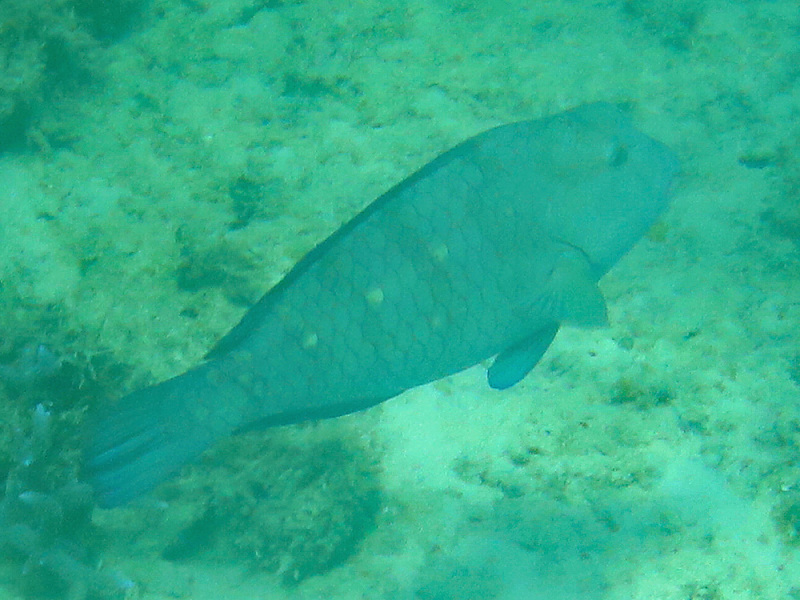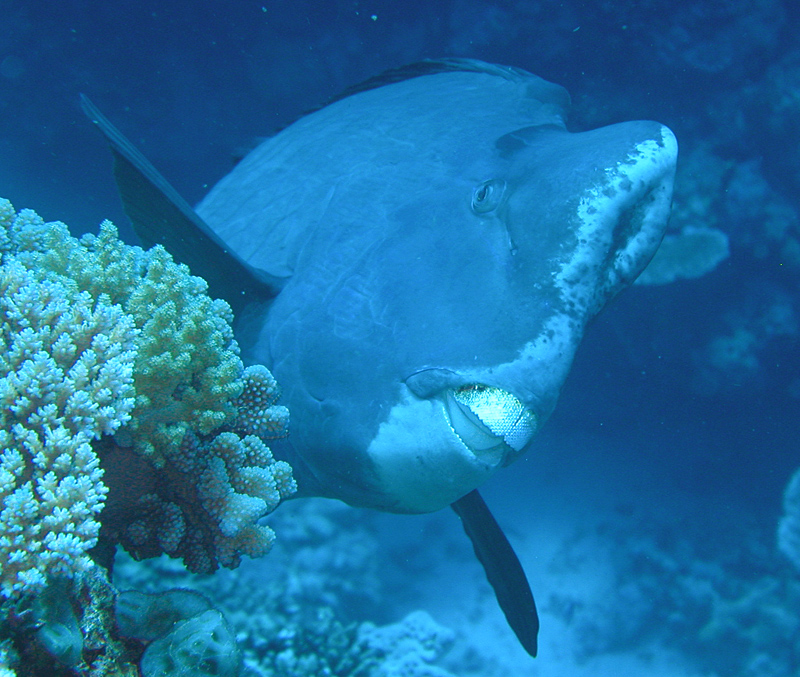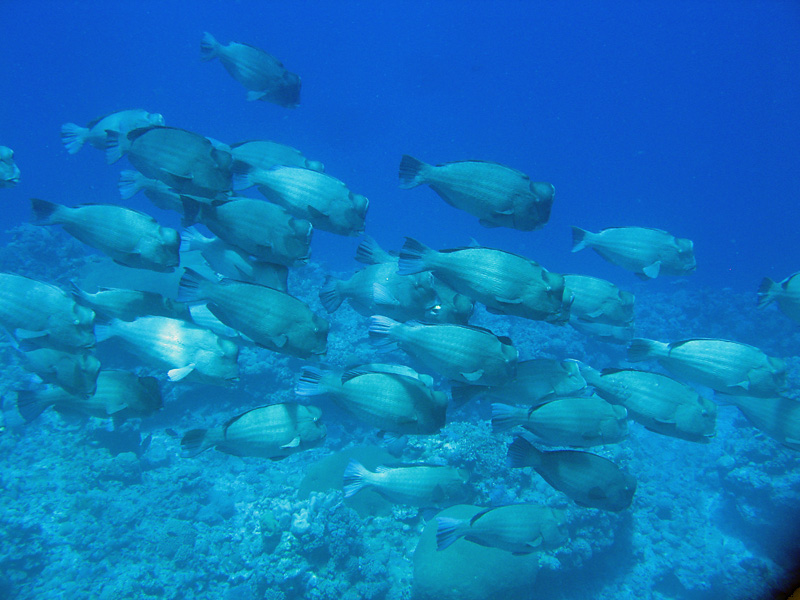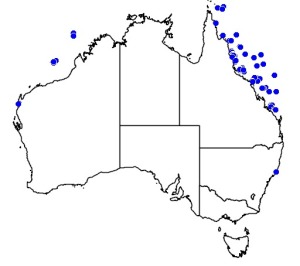
©Anne Hoggett: A small Bolbometopon muricatum (30-35 cm long) near Turtle Beach, Lizard Island. Note white spots on upper side.
Colours
Distinguishing features
A large to very large fish with a dark blue-grey body and a prominant bony hump on the head, which gets larger with age. Usually seen in schools. This is the largest parrotfish.
Size
- Up to 130 cm (Standard length)
Depth range
- Depth range data is not yet available.
Synonyms
Distribution
Distribution and habitat preferences
Mainly shallow flats and fronts of exposed reef habitats, although also seen in lagoonal and backreef patches occasionally.
Found in most locations around the Island.
Local abundance
- Lizard Island: Large schools (30 to 150 individuals) seen frequently on the outer reef; smaller schools (5 to 30) seen occasionally around the Lizard Island Group
Behaviour
The Bumphead Parrotfish is the largest and longest lived member of the family Parrotfishes, with ages of at least 33 years recorded for large specimens. They shelter in caves and deeper lagoonal areas at night, before moving at dawn into shallower areas to feed during the day in large schools. These fish have powerful jaws, and feed on both benthic turf algae as well as living coral tissue which may form up to 50% of the diet. They consume several tonnes of coral reef matrix per fish each year, and are therefore important agents of bioerosion. Their schooling behaviour also means that they can cause considerable damage to living coral in localised areas through their combined feeding activities.
Spawning takes place in the summer months at reef passes and points with good water flow. The fish gather in large schools and spawning pairs rush upward into the water column to release gametes. Population turnover is slow, and juveniles are rarely seen. Most other Scarids are monandric or diandric protogynous hermaphrodites (fish start life as females and change to males later), however it appears that the bumphead parrotfish are effectively gonochoric (seperate sexes) throughout the lifespan despite being anatomically bisexual at smaller sizes.
Once widespread throughout the Indo-Pacific, Bumphead Parrotfish have been overfished to local extinction in many locations, and are now seen in good numbers only around Australia, PNG and the Solomon Islands.
Web resources
References
- Bellwood, D.R. (1985). The functional morphology, systematics and behavioural ecology of parrotfishes (Family Scaridae), Ph.D. thesis, James Cook University, Townsville. LIRS catalog number 310.
- Bellwood, D.R. (1996). Coral reef crunchers, Nature Australia, Autumn: 48-55. LIRS catalog number 604.
- Bellwood, D.R. and J.H. Choat (2011). Dangerous demographics: the lack of juvenile humphead parrotfishes Bolbometopon muricatum on the Great Barrier Reef. Coral Reefs, 30: 549-554. LIRS catalog number 1474.
- View all references





